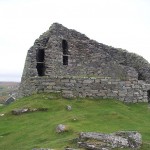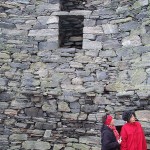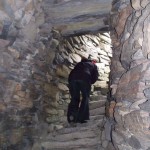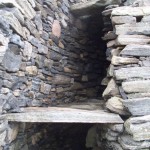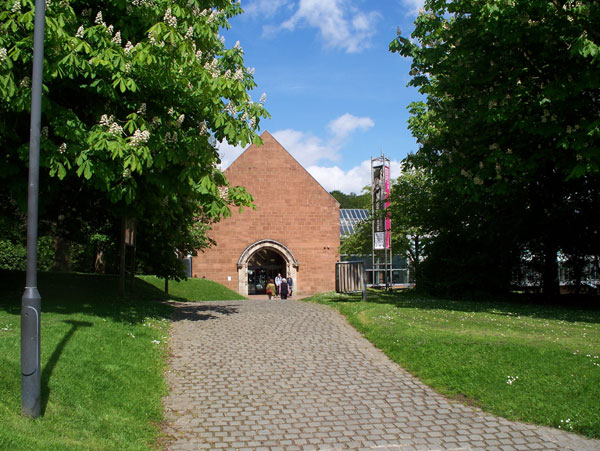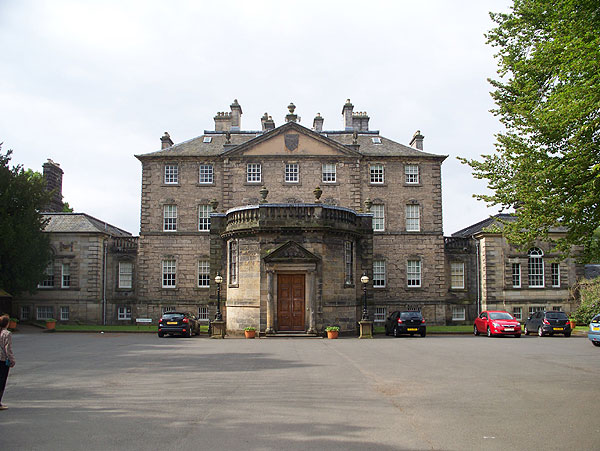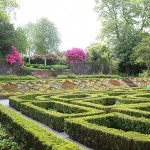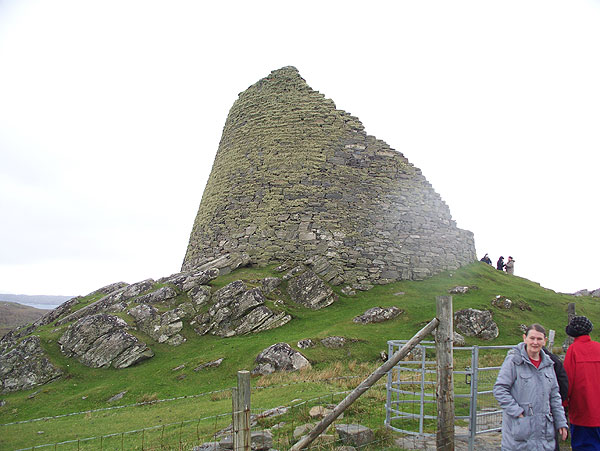
Scottish Heritage
This broch, one of the best preserved in Scotland, is near the north coast of Lewis. It was probably built in the first century AD and remained in occupation for some time, till the floor level became too high because of occupation layers. It was last used as a stronghold in 1601, so presumably was largely intact at that time. Afterwards, the broch was partly destroyed and used for building stone.
Originally it is thought to have had tapering hollow walls, with a conical roof of timber and thatch on top, and at least one upper wooden floor. Staircases within the double walls gave access to the upper levels. The lower parts of the staircases still exist.
Inside, at ground floor level are several openings. These give access to a small guard room, the staircase, and an oval room where traces of peat ovens were found.
It is possible to climb onto the structure. Surprisingly, there are no signs telling visitors not to climb on the broch.
Because of its rarity, this is a most interesting visit. There is a visitor centre nearby.
Click on images to enlarge.
